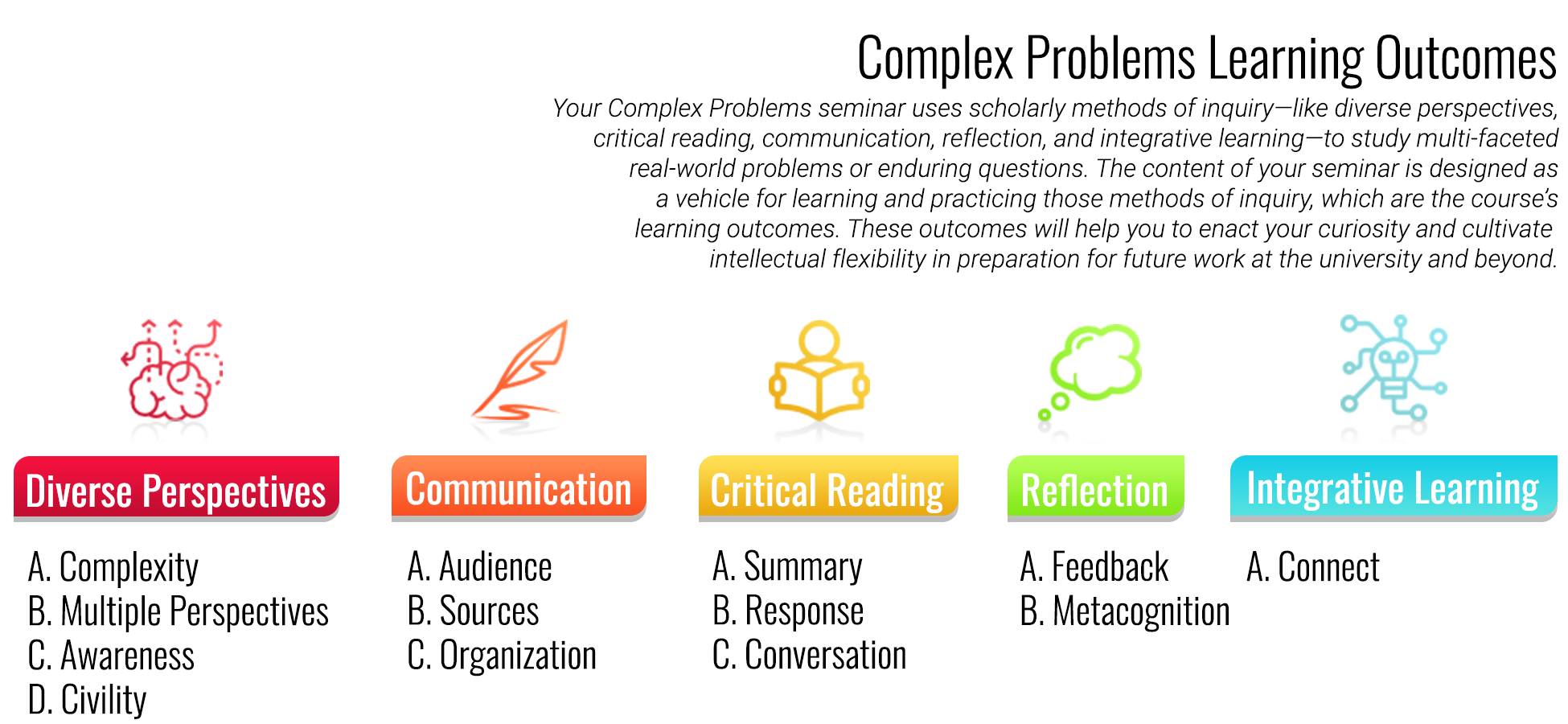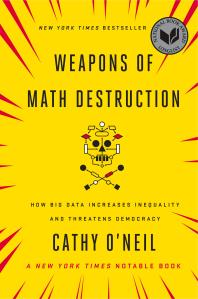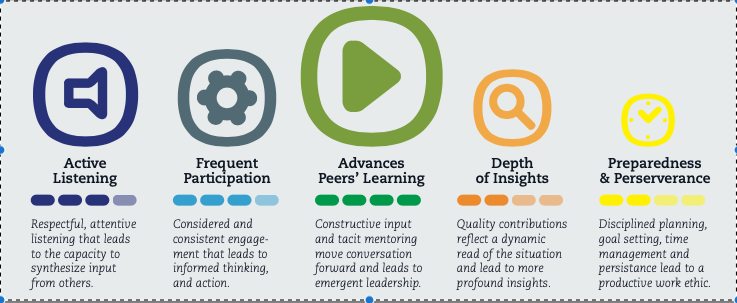AU CORE 105 Big Data, Bias, and Justice for All
A Complex Problems Seminar
1 Course Description and Purpose
Instead of eliminating the effects of human bias, naive algorithms empowered by big data can perpetuate and accentuate them. Big data often hides historical biases in its vastness while still missing key contextual information about an individual. Big data algorithms have no innate understanding of fairness, justice, or equality. This course investigates big data’s role in justice, health, education, personal finance, and housing and explores the interplay of ethics and practical considerations in subjects such as bias in data collection, privacy protection, open data, algorithmic bias detection, and bias in outcomes and communicating results (e.g., infographics and “fake news”).
You will exercise critical thinking skills to assess and critique new information, especially data-driven stories and infographs, for authenticity, accuracy, and meaning. You will analyze recent publications and online sources, to include open data to research current issues and the state of the practice. By engaging with guest speakers on emerging challenges in policy and technology you will see diverse perspectives to challenge your thinking. You will choose a focus area of personal interest and produce an analysis of the most pressing concerns related to big data and biased outcomes and then recommend creative, actionable solutions for government, industry, and/or society.
As a Complex Problems course, this primary purpose of this course is to exercise and strengthen your abilities in scholarly methods of inquiry. We will use our investigation into real-world issues of big data and bias as an opportunity to apply skills in research, analysis of diverse perspectives, communication, and collaboration. The goal is for you to integrate across methods while you increase competency in moving from problem identification to understanding to persuasive action. Course activities and assignments create opportunities for you to give feedback and to respond to feedback to help you reflect on how you perceive and analyze the world, and engage with others. In short, this course is designed to help you learn about big data, bias, and justice for all, but more importantly, to learn about You.
2 Course Learning Outcomes
All Complex Problems courses share the same learning outcomes, regardless of the course content under investigation, as shown in Figure 1.

At the end of the course, a successful student will be able to ...
Appreciate Diverse Perspectives: Analyze complex issues from multiple perspectives, develop self-awareness, and demonstrate civility towards others
Communicate Effectively: Identify audiences, integrate sources, and organize ideas
Employ Critical Reading Skills: Summarize material, respond to material, and develop a “conversation” across materials
Reflect and Respond: Incorporate feedback and practice meta-cognition
Integrate Learning Across Diverse Experiences: Connect external experiences (“co-curriculars”) with academic learning to shape a broader perspective.
3 Course Details
This course has no prerequisite courses and does not require any prior software development or quantitative analytics experience
3.1 Overall Structure
- We will use Canvas as our Learning Management System for the course
- We will meet twice each week for face-to face discussions. If circumstances change and we have to meet via Zoom it will be at the same time as face to face classes.
- The schedule will change as guest speakers and other co-curriculars evolve.
- I will be recording portions of most classes .
- Class materials will be posted on Canvas before each class.
3.2 Textbook
Cathy O’Neill
2016, Broadway Books
ISBN: 978-0-553-41883-5
E book ISBN: 978-0-553-41882-8
Available from multiple sources

3.3 Other Course Materials
Students will need a computing device with internet access
Other required and optional materials will be provided via Canvas, Course Reserves, or references to Internet sources, e.g., YouTube
In addition to lecture notes these may include academic papers provided by the guest speakers, podcasts, YouTube videos, Ted Talks or other presentations/interviews or other media.
The current requested course reserve materials include select chapters from the following books:
| Title | Author | Year |
|---|---|---|
| Invisible Women: Exposing Data Bias in a World Designed for Men | Caroline Criado Perez | 2019 |
| How Charts Lie: Getting Smarter about Visual Information | Alberto Cairo | 2019 |
| Understand, Manage, and Prevent Algorithmic Bias: A Guide for Business Users and Data Scientists | Tobais Baer | 2019 |
3.4 Class Topics and Schedule (Subject to Change)
The course is organized into three main parts:
- Part 1 covers classes 1 to 7 where we investigate what we mean by Big Data, Bias and Justice.
- Part 2 covers classes 8 to 15 where we investigate different frameworks for understanding and analyzing issues associated with Big Data, Bias and Justice.
- Part 3 covers class 16 to 28 where we investigate specific scenarios involving the use of Big Data.
- Our last class, 29, is during final exam period where you will share the results of your final projects with each other.
The schedule below shows the general flow of topics and guest speakers.
- During a typical week the Monday class will focus on discussion about the topic based on the course resources and Thursday will focus on an group activity about the topic.
- We will also have co-curricular events held outside of normal class time, one of which will be academic in nature.
- The academically oriented co-curricular event will be a movie night where we watch the Netflix documentary The Social Dilemma together. We will do this before we have our first guest speaker as the content is directly relevant to their work.
| Classes | Topic | Module |
|---|---|---|
| 1 | Intro and Data Science Life Cycle | 1 |
| 2-3 | Big Data | 2 |
| 4-5 | Bias | 3 |
| 6-7 | Justice and Fairness | 4 |
| 8-9 | Legal and Ethical Frameworks | 5 |
| 10-11 | Analyzing Data: Inputs and Outputs | 6 |
| 12 | Assessing Algorithms: Bias | 7 |
| 13 | Assessing Algorithms: Differential Privacy | 7 |
| Co-curricular Move Night on Social Media | ||
| 14-15 | Analyzing Graphics | 8 |
| 16 | Scenarios in Micro-targeting and Recommendations | 9 |
| 17-18 | Scenarios in the Justice System | 10 |
| 19 | GS: Fairness and Responsibility in Social Media | 9 |
| 20 | Scenarios in Finance: Insurance | 11 |
| 21 | GS: Analyzing Data for News/Graphics | 8 |
| 22 | Scenarios in Finance: Credit and Risk | 11 |
| 23 | GS: Ethical AI | 9 |
| 24 | Scenarios in Education | 13 |
| 25 | Scenarios in Education - Admissions | 13 |
| 26 | Scenarios in Medicine | 12 |
| 27 | Course Review and Assessment/SET/Peer Reviews | 12 |
| 28 | GS: Medical | 13 |
| 29 | Final Project Presentations | 14 |
| Guest Speakers and Dates are tentative so classes will probably shift. |
3.5 Guest Speakers
The classes with GS in the Topic in the table above are planned Guest Speakers.
4 Graded Elements and Rubrics
There are multiple categories of graded elements in this course as seen in the table below. There are no quizzes or exams planned but that may change if determined to be in the best interest of achieving the learning outcomes. The assignments and due dates may evolve as the schedule changes to accommodate Guest Speakers or the flow of the course.
The Learning Outcome on oral and written communication means this class will require you to speak and write in a style and structure to communicate effectively in the given situation. Many of the graded elements require effective communication of your impressions or analysis. You will have to select the appropriate style and structure for the element and the audience. A style that might be appropriate for a discussion may not be appropriate for a journal or a final project paper. In all cases, generally accepted uses of punctuation, grammar and spelling help you communicate more effectively. The AU Writing Center is a great resource for students.
Each graded element has a specific maximum possible score with a specific instructions and a rubric tailored to the category and this course.
The rubrics identify the standard of performance required to achieve a numerical score within the categories of Excellent, Proficient, Limited or Poor for the essential aspects of the assignment.
The maximum scores range from 4 points for each class attendance and engagement, to 5 points for a weekly Journal entry, to 55 Points for the Final Project Essay paper.
No single item is worth more than 12% of the overall score as class engagement and participation (~20%) builds up class by class.
The graded elements exercise a primary learning outcome with multiple supporting learning outcomes.
As the course schedule, including guest speakers may change, there may be changes to the elements below. Elements may be added or deleted or due dates may be changed
4.1 Class Room Engagement
- As a seminar course, your contributions to the discussion are important to your learning and that others. Complex problems benefit from considering diverse perspectives so contribute your ideas.
- The rubric on classroom engagement has two criteria: Attendance and Engagement. One must be present to engage.
- You will complete a self reflection survey after each class to assess your attendance and engagement.
- Figure 2 from Lisa Grocott and the THRIVING Research Lab provides some ideas on how to engage in the course to advance your learning and the learning of others.

4.2 Final Project
- Detailed instructions will be provided in the actual assignment but the following should provide some idea of the expectations for the Final Project.
- It is an individual effort but could be considered a “quasi-group” project as it requires the solicitation and use of peer feedback throughout the development process.
- The primary element is the Essay exploring a relevant topic of your choice.
- Each person will present a five minute summary of their analysis to the class in an oral presentation during the final exam period.
- The Project Presentation includes the requirement to produce and present a “Call to Action”. This is a creative artifact you develop to inspire others to act on behalf of the recommendations resulting from your analysis.
- The Call to Action can be in any medium appropriate for your intended audience and for sharing within a two minute span in a teleconference. As examples: it could be a dynamic infographic, a press release, or a point paper. However, it could also be a TikTok video, a poem or a song, a poster or painting - whatever form best suits your talents and passion. Whatever the medium, it does have to be appropriate for the intended audience and contain elements expressing the issue and your recommended action(s).
- The rubric for the presentation includes points a peer assessment of the presentation so you will be reviewing each other’s presentations in accordance with the criteria in the rubric.
4.3 Typical Assignments during a Semester.
The course has many assignments but many are short. Pay close attention to the instructions and rubrics to ensure you capture all elements.
| Category | Name | Rubric | Primary LO |
|---|---|---|---|
| Engagement | Class Attendance and Engagement (29) | Class Engagement (85 Pts) | Communication |
| Engagement | Class Attendance and Engagement Self Reflection (28) | Class Engagement (1 Pt) | Reflection |
| Discussion | Online Discussions (3) | Online Discussions (30 Pts) | Critical Reading |
| Assignment | Guest Speaker Analysis and Questions (GS A&Q) Draft (3-4) | Analysis and Questions for Guest Speaker (23 Pts) | Diverse Perspectives |
| Assignment | GS A&Q Peer Reviews (3) | Conduct Peer Reviews (10 Pts) | Diverse Perspectives |
| Assignment | GS A&Q Response to Peer Review (3) | Analysis and Questions for Guest Speaker (7 Pts) | Reflection |
| Journal | Weekly Journal (11) | Weekly Journal (5 Pts) | Reflection |
| Journal | Reflection of Journals (1) | Short Paper (25 Pts) | Reflection |
| Assignment | Big Data, Bias, and Justice Short Paper | Short Paper (25 Pts) | Integrative Learning |
| Assignment | News Statistics/Graphic Short Paper | Point Paper (25 Pts) | Integrative Learning |
| Essay | Final Project Essay | Essay Paper (55 Pts) | Communication |
| Presentation | Final Presentation of Call to Action | Presentation of Call to Action (30-45 Pts) | Communication |
4.4 Final Grades
Final grades are based on the weighted average of the graded elements with an emphasis on how students demonstrate the course learning outcomes by the end of the course.
| Range % | Letter |
|---|---|
| 93 or above | A |
| 90-92 | A- |
| 87-89 | B+ |
| 83-86 | B |
| 80-82 | B- |
| 77-79 | C+ |
| 70-76 | C- |
| 67 - 69 | C- |
| 60-66 | D |
| 59 or less | F |